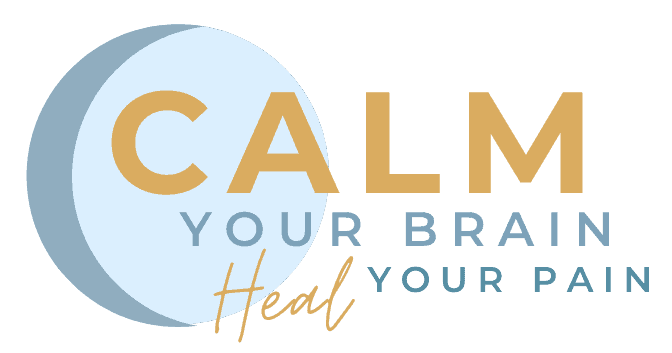
Find Relief from Chronic Pain
and Reclaim Your Life
Chronic pain can feel overwhelming, but it doesn’t have to define your life. Real relief is possible when you understand and address pain where it truly begins—in your brain
Is Chronic Pain Controlling Your Life?
Living with chronic pain is exhausting.
Whether it stems from an injury or an ongoing condition, it can overshadow every aspect of your daily life, making it hard to focus on anything else.
You have probably tried countless treatments—medications, physical therapy, even surgery—without lasting relief. I want you to know that you’re not alone.
Millions of people share your struggle. According to the CDC, over 20 percent of Americans experience some form of chronic pain, from migraines to fibromyalgia to joint pain. Many have tried various treatments, only to find themselves trapped in a cycle of discomfort and frustration, losing hope that life without pain is possible.
But there is hope.

A New Perspective on Treating Pain
Traditional treatments often focus solely on the physical aspects of pain, overlooking a critical factor—the role of the brain.
Pain isn’t just a physical sensation; it’s shaped by neural pathways in your brain. Sometimes, these pathways can become altered, causing your brain to misinterpret normal bodily signals as pain.
This cycle can continue indefinitely, perpetuating chronic pain. To truly break free, it’s essential to address the mind-body connection and tackle the root cause of your pain—how your brain processes it.
Introducing Pain Reprocessing Therapy (PRT)
PRT is an innovative approach that helps your brain reinterpret pain signals, shifting fear, frustration, and other negative emotions to a state of calm and relief. By rewiring these neural pathways, PRT can diminish—and even eliminate—chronic pain, allowing you to regain control over your life and return to the activities you love.
This therapy isn’t just new; it’s proven. In clinical trials, 98% of participants reported improvements in their pain, with 66% becoming pain-free or nearly pain-free by the end of their treatment.
A Framework for Lasting Relief
The Calm Your Brain, Heal Your Pain course is designed to help you:
Understand the connection between your brain and your pain
Identify and adjust the thoughts and reactions that intensify your pain
Experience pain in a new way—without the usual stress and fear
Reframe your perception of pain to lessen its impact on you
Navigate setbacks when old patterns resurface
This course provides a straightforward, actionable framework that integrates both the mind and body, empowering you to handle your pain in a new way. The goal is not just temporary relief but a lasting change that can help you live pain-free.


Meet Your Guide
Hi, I’m Annie Miller, a licensed therapist and the owner of DC Metro Therapy.
With over 15 years of experience, I specialize in helping people overcome chronic pain, insomnia, anxiety, and trauma.
I know how isolating chronic pain can be—because I’ve been there myself. During my own struggles with pain, I felt unheard and uncertain about the future. But through learning about the mind-body connection and applying these principles to my own life, I was able to heal. Now, I’m passionate about helping others find the same relief.
My mission now is to help as many chronic pain and illness sufferers as possible ease — and potentially alleviate — their pain.
Thanks to my personal experience, plus the range of therapies I use with my clients that address the mind-body connection we have with pain, I’ve developed a framework that is not only effective, evidence-based, and clinically proven but is easy to implement on your own.
If you’re ready to explore a new approach to managing your pain, I’m here to guide you every step of the way.
Program Breakdown
Here’s what you’ll learn and explore in each module of Calm Your Brain, Heal Your Pain
Module 1: Your Brain on Pain
In this first module, we’ll dive into the science behind how your brain processes pain. You’ll learn about the crucial mind-body connection and discover how your thoughts, beliefs, and emotions influence your experience of pain. We’ll also explore why your brain might be amplifying pain signals and how you can start to shift these patterns to reduce discomfort.
Key Tools:
- Stress-Pain Connection Assessment: Identify whether your pain is linked to neural pathways.
- Pain Pie Chart Exercise: Analyze how much time you spend focusing on pain.
- Common Diagnosis Checklist: Understand diagnoses commonly related to the mind-body connection.
- Brief Pain Inventory & Perceived Stress Scale: Assess your pain and your stress levels.
- Journal Exercise: Reflect on your pain and set intentions for your progress in the course.
Module 2: Emotions and Pain
In this module, you’ll uncover how emotions like fear, sadness, and frustration can intensify your pain. Understanding this connection is crucial to changing how you experience pain. By the end of this module, you’ll have a new perspective on the emotional roots of your pain and how these feelings influence your daily life.
Key Tools:
Calm Place Visualization: Focus on positive imagery to shift away from pain.
Loving Kindness Meditation: Break negative associations with pain through compassionate self-talk.
Thought Record Worksheet: Reflect on pain triggers and the thoughts that worsen them.
Personality Trait Rating Scale: Identify personality traits that may impact your pain.
The “C” of CALM Lesson: Learn to recognize and manage the emotions tied to your pain.
Journal Exercise: Connect your most challenging life events to your physical pain for deeper insight.
Module 3: Finding the Proof
This module focuses on gathering evidence that your pain is rooted in your brain rather than your body. You’ll examine activities that trigger your pain and identify moments when those activities didn’t cause discomfort. This process helps you understand that your pain is linked to neurological patterns, paving the way for a shift in how you perceive and manage it.
Key Tools:
Proof Page Exercise: Recognize the brain-based nature of your pain.
Relaxation Techniques: Use the Wet Noodle/Melting Exercise and Breathing Exercise to ease muscle tension and calm your mind.
Pain-Related Habits Quiz: Identify behaviors that may be exacerbating your pain.
Autogenic Training: Learn techniques to relax your body and soothe your nervous system.
The “A” of CALM Lesson: Practice accepting sensations without trying to alter them, reducing the intensity of pain.
Module 4: Mindfulness and Somatic Tracking
In this module, you’ll learn how to experience pain without the negative emotions that often accompany it. The focus is on developing new responses to pain, practicing them regularly, and making these responses more automatic over time.
Key Tools:
Somatic Tracking Audio Recording: Shift your focus from pain to a sense of safety, reducing negative emotions.
Positive Self-Talk and Activities List: Break the cycle of negative associations by engaging in activities that reinforce positive thinking.
Mindfulness and Acceptance Worksheet: Practice acknowledging your emotions during pain, breathing through them, and showing yourself compassion.
Seeing Pain as Safe Worksheet: Reframe your experience of pain as just a sensation, helping your brain recognize that you are safe.
Module 5: Extinction Bursts, Confronting Avoidance, and Setbacks
In the final module, you’ll learn how to handle moments when your brain tries to revert to old pain patterns, known as extinction bursts. This module will guide you through understanding these setbacks, keeping your progress on track, and using positive self-talk to reinforce your healing.
Key Tools:
Changing the Meaning Journal Prompt: Transform negative pain-related thoughts into positive ones.
Behavioral Activation Diary: Take actionable steps to confront and overcome avoidance behaviors.
Overcoming Setbacks Exercise: Develop strategies for managing setbacks, including specific actions and thoughts.
The “M” of CALM Lesson: Focus on moving towards positive sensations and reinforcing feelings of safety.
Bonus Module: Addressing Other Stressors and Embracing Positivity
This bonus module helps you identify and address life factors, personality traits, and behaviors that may be contributing to your pain. You’ll also learn practical steps to shift your thoughts and actions toward more positive and healing choices.
Ready to finally start using a treatment for your chronic pain that can address the root cause?
Your experience starts immediately once you click the “Join Now” button below, where you’ll be taken to our secure checkout. When you register, you’ll receive an email confirming your registration, as well as instructions on how to access your learning portal.
If you have questions along the way, our team is here to help you get access to the content and ensure you get the most out of the program! Just email us at: support@dcmetrotherapy.com
Join now and you will receive:

COURSE + BONUS CONTENT
5 recorded video modules, delivered weekly
26 tools and exercises
1 value-packed bonus
PLUS Improving Your Sleep and Other Symptoms Bonus Module
PLUS Frequently Asked Questions Bonus Module
$297 or 3 monthly payments of $99


30-Day Money-Back Guarantee
You can dive into the course for the first 30 days and begin learning the Pain Reprocessing Therapy framework to ease your chronic pain. If you are not satisfied with the results, you can request a refund within 30 days. This entire program is designed to help you put the knowledge that you’re learning into action. You will be asked to share your implementation and results in the program to qualify for a refund.
You don’t have to let chronic pain control your life
there’s a way to move beyond it for good
With a clinically proven, effective approach that doesn’t rely on medications, procedures, or surgery, you can address the root cause of your pain by focusing on how your brain processes it.
If you’re ready to explore a treatment that targets the brain’s role in your pain and offers a path to true relief, Calm Your Brain, Heal Your Pain: A Framework for Managing and Easing Chronic Pain is here to guide you.
